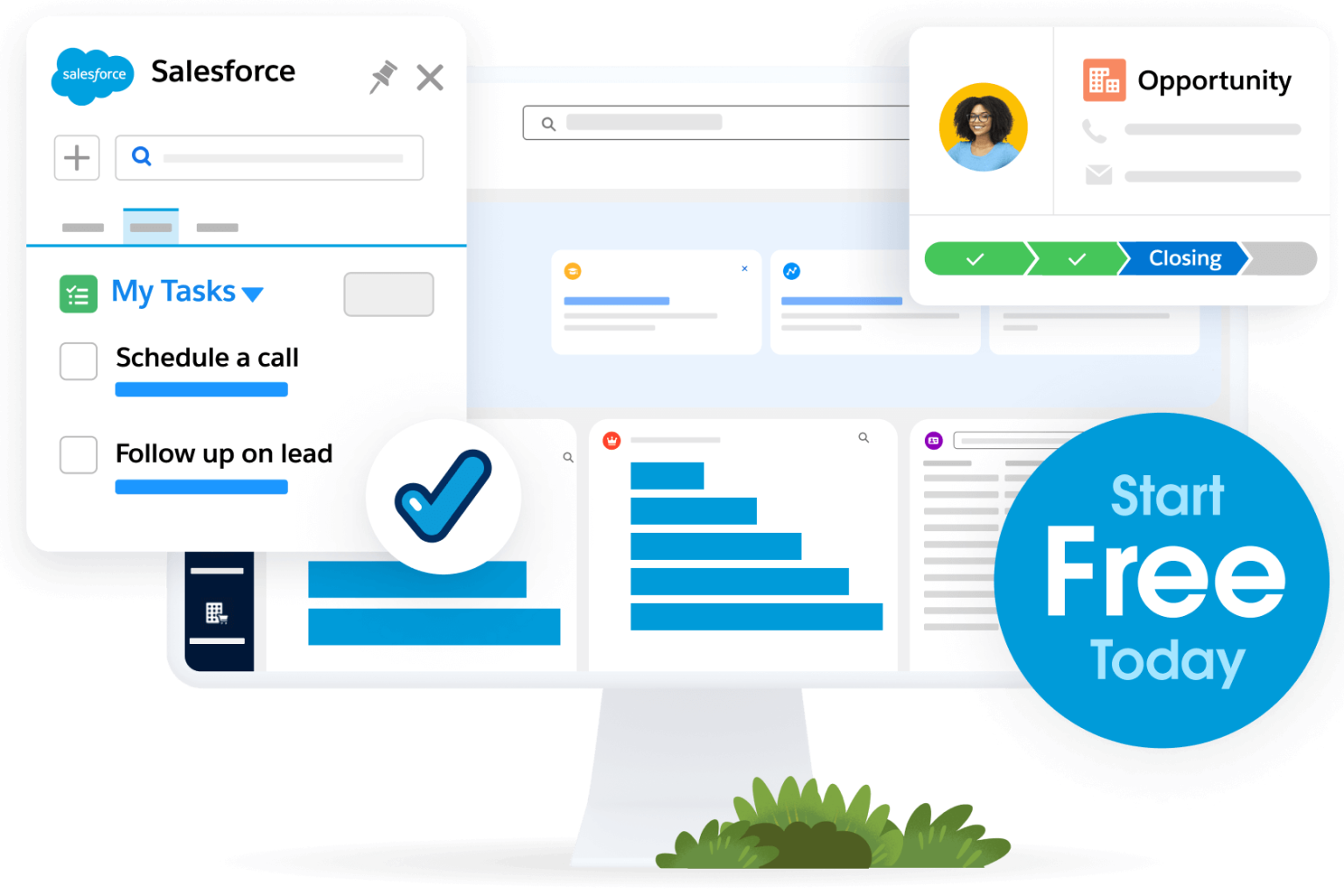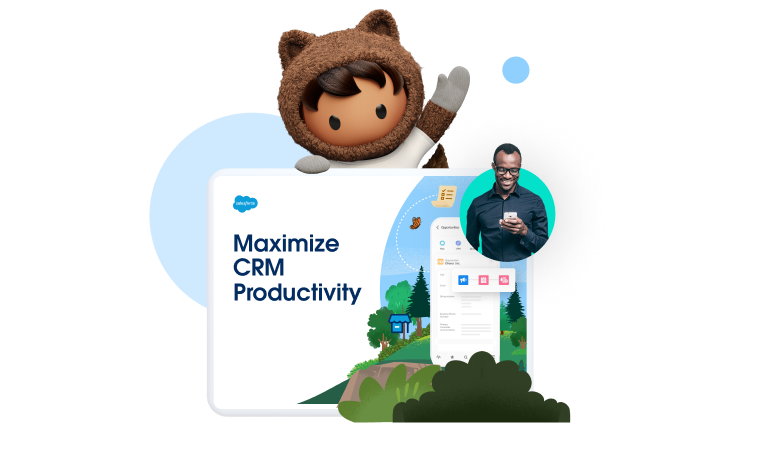Every small and medium-sized business (SMB) owner faces the challenge to make every dollar they spend produce results. If you’re a business owner, choosing between hiring another salesperson, investing in marketing, or upgrading your customer relationship management (CRM) can be a hard choice. That’s why learning about return on investment (ROI) becomes your most important decision-making tool.
So, what exactly does a return on your investment mean and why is it so important? This guide breaks down ROI in practical terms, showing you how to calculate returns on business investments, interpret the results, and make data-driven decisions that drive growth. We’ll cover real examples and provide frameworks you can apply to any business investment decision.
What is return on investment (ROI)?
Return on investment (ROI) is a financial metric used to evaluate the profitability of an investment by comparing its gain or loss relative to its cost. It’s an important tool for assessing the potential returns from asset investments such as stocks or business ventures.
ROI calculates the ratio between profit and investment cost. Typically expressed as a percentage or a ratio, ratio, usually shown as a percentage. ROI helps you compare different investment options and choose the most profitable ones.
Use ROI to compare various investments, such as stocks, bonds, real estate, or business ventures and picking those matching your goals and risk comfort level.. This approach maximizes your financial success potential.
How to calculate ROI
To calculate ROI, the net income (or profit) obtained from an investment is divided by the total cost incurred in making that investment. The ROI formula is as follows:
ROI = (Net Income / Total Cost) x 100
For example, if an investment of $1,000 generates a net income of $200, the ROI would be 20%. This means that the investment generated a return of $0.20 for every $1 invested.
When calculating ROI, there are a few things to keep in mind. First, it’s important to use the net income (or profit) after all expenses have been paid. This includes the cost of goods sold, operating expenses, and interest. Second, the total cost of the investment should include the initial investment and any ongoing costs, such as maintenance or marketing.
Attract more customers with Salesforce AI
ROI helps you compare different investment options and assess the effectiveness of financial decisions. For example, a company may be considering two different marketing campaigns. The first campaign has a lower upfront cost but is expected to generate less revenue. The second campaign has a higher upfront cost but is expected to generate more revenue. By calculating the ROI of each campaign, the company can determine which is the better investment. Here are a few tips on how to improve your ROI:
- Use leverage: Leverage is borrowing money to finance an investment. When used effectively, leverage can magnify an investment’s returns. However, it’s important to use leverage carefully, as it can also magnify losses.
- Look at ROI along with other numbers: ROI is helpful, but don’t use it alone to make decisions. Other measures can help too. Using multiple ways to measure success gives you a better picture.
- Monitor your investments regularly: The financial landscape is constantly changing, so monitoring your investments regularly is important to ensure they’re still meeting your goals. You can make adjustments as needed to improve your investment performance by tracking your ROI and other metrics.
Kickstart your SMB with Starter Suite
See results from day one with a CRM designed for SMBs — the all-in-one suite for productivity. It all starts with Starter Suite.

How to interpret ROI
To interpret ROI the right way for your business, keep it simple. A positive ROI means you’ve made money, while a negative ROI means you’ve lost money. The size of the number matters, a higher positive ROI shows stronger profitability, while a smaller negative ROI means the loss wasn’t significant.
When comparing different investments, it’s important to consider their respective ROIs. The investment with the highest ROI isn’t necessarily the best option, as other factors may need to be considered. For example, an investment with a lower ROI may have a shorter payback period or involve less risk. When evaluating artificial intelligence (AI) solutions, an AI CRM with moderate ROI but faster implementation might be more valuable than one promising higher returns over several years.
It’s important to remember that ROI is just one metric. Other factors matter when evaluating investments, including:
- Risk tolerance: How much risk you’re willing to take
- Time horizon: How long do you plan to hold the investment
- Liquidity: How easily you can access your money
Considering these alongside ROI helps you make decisions that fit your financial goals.
ROI examples
Here are some examples that showcase how businesses like yours are figuring out ROI to their advantage:
Example 1: Real estate investment
Suppose you purchase a rental property for $100,000 and incur closing costs and other expenses of $5,000. You rent out the property for $1,500 per month and incur annual expenses of $10,000 (including mortgage payments, property taxes, insurance, and maintenance). After one year, you sell the property for $120,000.
To calculate ROI, first determine the net income:
Net Income = (Rental Income – Expenses – Cost of Property)
Net Income = ($1,500 x 12) – $10,000 – $105,000 = $15,000
Next, calculate the total cost of the investment:
Total Cost = Cost of Property + Expenses
Total Cost = $100,000 + $5,000 = $105,000
Finally, calculate ROI:
ROI = (Net Income / Total Cost) x 100
ROI = ($15,000 / $105,000) x 100 = 14.29%
In this example, the ROI of the real estate investment is 14.29%, indicating that for every dollar invested, the investor gained $0.14.
Example 2: Stock investment
Consider an investment in a stock that is purchased for $50 per share. After one year, the stock price increases to $60 per share, and the investor receives a dividend of $2 per share.
To calculate ROI, first determine the net income:
Net Income = (Sale Price + Dividend – Purchase Price)
Net Income = ($60 + $2) – $50 = $12
Next, calculate the total cost of the investment:
Total Cost = Purchase Price
Total Cost = $50
Finally, calculate ROI:
ROI = (Net Income / Total Cost) x 100
ROI = ($12 / $50) x 100 = 24%
In this example, the stock investment’s ROI is 24%, indicating that for every dollar invested, the investor gained $0.24.
These examples demonstrate how ROI can be calculated for different types of investments. Investors can make informed decisions about which investments to pursue by considering ROI.
Maximize Your CRM Productivity
Learn how small and growing businesses are taking productivity to new levels with Salesforce CRM in this free e-book.

Thank you for downloading the free e-book!
Here's your free e-book!Comparing investments and annualized ROI
When comparing different investments, you need to consider their respective ROIs. Numbers may not be enough, since they don’t account for how time affects your returns. This is where yearly ROI comes in.
Yearly ROI considers your total returns over one year It is calculated by multiplying the ROI for a given period by the number of periods in a year.
For example, if an investment has a quarterly ROI of 5%, its annualized ROI would be 5% x 4 = 20%.
Yearly ROI gives you a better picture as it considers the compounding effect of returns [EXPLAINED] includes how your earnings can earn more money too. This means the profit you make can make you even more money over time. As a result, yearly ROI shows you how much your money could grow over time.
When comparing investments, make sure you use the same time to make the comparison fair. For example, if you compare the yearly ROI of two stocks, you should use the same one-year period for both stocks.
Finally, yearly ROI can also compare investments with different risk levels. Higher-risk investments typically have the potential for higher returns but also have a greater chance of loss. By comparing the yearly ROI of different investments, you can make smart decisions about which investments fit your comfort with risk and money goals.
Combining leverage with ROI
Leverage is a financial concept that uses borrowed capital to finance an investment or project. Using leverage can help investors magnify their returns but also increase their risk of loss. The more leverage used, the higher the potential return and the greater the risk of losing the initial investment.
How leverage affects ROI
In the context of ROI, leverage can increase the potential return on investment by increasing the amount of capital invested.
For example, if an investor has $10,000 to invest and uses leverage to borrow an additional $10,000, they can invest $20,000. If the investment generates a return of 10%, the investor’s ROI would be 20% ($2,000 profit on a $10,000 investment).
The risk factor
It’s important to remember that leverage can also magnify losses. If the investment loses 10%, the investor would also lose 20% ($2,000 loss on a $10,000 investment). Therefore, using leverage carefully and only when the potential rewards outweigh the risks is important.
One way to mitigate leverage risk is to use it with other risk management strategies, such as diversification and stop-loss orders.
- Diversification involves investing in various assets, which can help reduce the risk of losing money if one particular investment performs poorly.
- Stop-loss orders can automatically sell an investment if it reaches a certain price, which can help limit losses.
Leverage can be a powerful tool for investors, but it’s important to use it carefully and understand the risks involved. Combined with smart safety measures, it can improve ROI while protecting your money.
Grow Your Small Business With AI Agents
Learn how autonomous AI can scale your small business for efficient growth in our free e-book.

Advantages of ROI
ROI helps SMB owners make smart decisions about where to spend their money. Here’s why it’s valuable for evaluating business investments:
Easy to understand and calculate: ROI uses simple math: divide your profit by what you spent, then multiply by 100. No complex formulas needed. This makes it practical for busy business owners who want quick answers about technology investments.
Compare different options: Should you hire another salesperson or invest in CRM software? ROI helps compare very different investments on the same scale, so you can see which delivers the biggest return.
Track your progress: Set accessible ROI targets and measure actual results. If your CRM subscription aimed for 200% ROI but delivered 150%, you know where to adjust.
Universal business language: Everyone understands ROI percentages. Whether it’s your accountant, business partner, or investor, ROI creates a shared language for performance and investment decisions.
The limits of ROI
While ROI is useful, it may not tell the whole story for your business. Here are a few considerations when calculating and interpreting your ROI:
- It reflects past results, not future performance.
- It ignores timing. A 50% return in six months is stronger than the same return in three years.
- It misses risk. Two projects can show the same ROI but have very different chances of success.
- It doesn’t show the dollar impact. A 10% ROI on $100,000 is very different from a 50% ROI on $1,000.
These limitations don’t mean ROI isn’t valuable — they mean it should be paired with tools that give you real-time data and visibility into your business performance.
How CRMs are ROI-ready
This is where CRM platforms like Starter Suite or Pro Suite come in. They don’t just help you calculate ROI, they help you improve it. Automation reduces time spent on manual work, AI insights surface the best opportunities, and centralized data keeps sales, marketing, and service aligned. When ROI tracking is paired with tools that increase efficiency, small businesses make sharper decisions and see returns faster.
Boost sales with a CRM made for growing businesses
Try Starter Suite for free to close more deals and win more customers, today.

How Salesforce can help you boost ROI
Understanding ROI is one thing — achieving it’s another. The gap between having the idea and implementing it separates growth from stagnation.
Small businesses are already using Salesforce to compete with much larger companies. The right technology transforms ROI from a calculation into a competitive advantage, helping you identify high-converting lead sources and optimize your entire sales process.
Start your journey with Starter Suite today. Looking for more customization? Explore Pro Suite. Already a Salesforce customer? Activate Foundations and try out Agentforce 360 today.
AI supported the writers and editors who created this article.






























